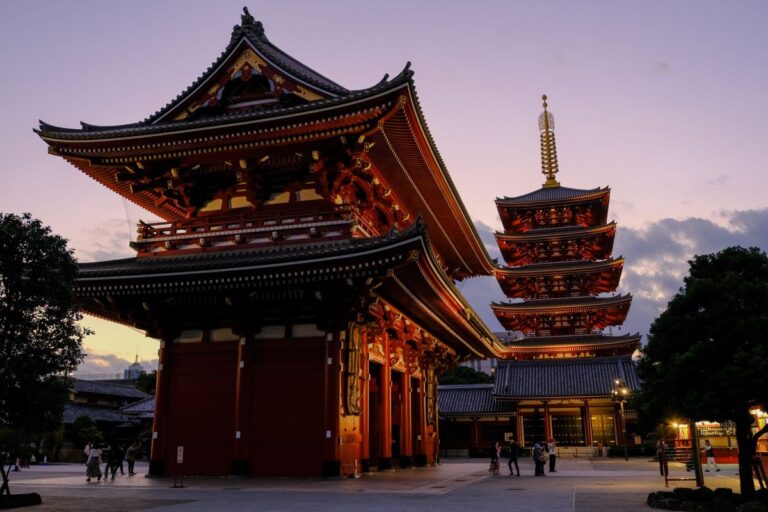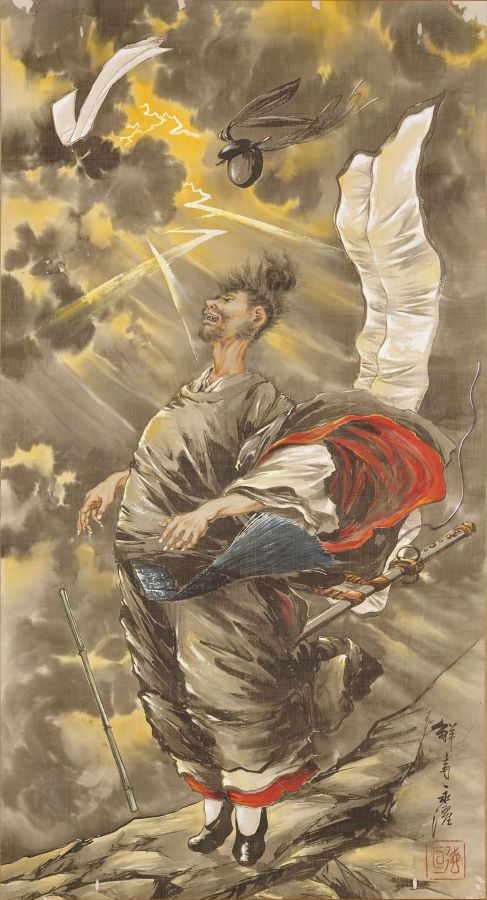The Kamakura period is a significant era in Japanese history that lasted from 1185 to 1333. It marked the establishment of the Kamakura shogunate, which saw the governance of Japan by military leaders known as shoguns. During this period, the basis of feudalism was firmly established, and the samurai warriors emerged as a dominant force in Japanese society.
The Kamakura period was named after the city of Kamakura, where Minamoto Yoritomo set up the headquarters of his military government. The period saw the end of the Heian period and the beginning of the medieval era in Japan. The Kamakura shogunate faced many challenges during its governance, including natural disasters, rebellions, and invasions from neighboring countries. Despite these challenges, the Kamakura period saw significant cultural, artistic, and architectural developments.
Key Takeaways:
- The Kamakura period lasted from 1185 to 1333 in Japan.
- The Kamakura shogunate was established
- Saw the emergence of the samurai warriors as a dominant force
- Marked the end of the Heian period and the beginning of the medieval era in Japan.
- Kamakura was the headquarters of the Kamakura shogunate.
Historical Background
The Kamakura period, which lasted from 1192 to 1333, was a significant period in Japanese history. It marked the establishment of the Kamakura shogunate, a military government that was established by Minamoto Yoritomo after he defeated the Taira clan in the Battle of Dannoura in 1185.
The Kamakura shogunate was the first of its kind in Japan, and it marked a significant shift in the country’s political and social structure. Prior to the Kamakura period, Japan was ruled by an imperial court that was dominated by aristocrats. However, during the Kamakura period, the power shifted to the samurai class, who were the military elite.
During this period, the samurai class became increasingly powerful, and the country was divided into feudal territories that were controlled by powerful samurai lords. These lords were known as daimyos, and they were responsible for maintaining law and order in their territories.
The Kamakura period was also marked by the rise of Buddhism in Japan. The period saw the introduction of the Amidist Pure Land schools of Buddhism, which emphasized salvation through faith in Amitabha. This led to the spread of Buddhism throughout Japan, and it became an integral part of Japanese culture.
Overall, the Kamakura period was a significant period in Japanese history. It marked the establishment of the Kamakura shogunate, the rise of the samurai class, and the spread of Buddhism throughout Japan.
Political Environment

The Kamakura period was a time of significant political change in Japan. The establishment of the Kamakura shogunate marked the beginning of feudalism in Japan, with power shifting from the emperor and nobility to military leaders known as shoguns.
The shoguns ruled from their base in Kamakura, with the emperor and court remaining in Kyoto as figureheads. The shoguns’ power was based on the support of the samurai, who were granted land and privileges in exchange for their loyalty and military service.
The Kamakura shogunate faced several challenges during its rule, including rebellions and invasions from neighboring countries. One notable rebellion was led by Emperor Go-Toba in 1221, who sought to restore imperial power. However, the shogunate was able to crush the rebellion and maintain its hold on power.
Despite these challenges, the Kamakura period saw the establishment of a stable feudal system that lasted for several centuries. The shoguns and samurai maintained their power and influence, with the emperor and court relegated to symbolic roles.
Social and Cultural Developments
The Kamakura period saw significant social and cultural developments in Japan. With the rise of the samurai class, a new social hierarchy emerged, with warriors at the top and farmers at the bottom. The samurai were the ruling class and held the most power and influence. They were expected to uphold a strict code of conduct known as bushido, which emphasized loyalty, honor, and duty.
During this period, Buddhism became the dominant religion in Japan. Zen Buddhism, in particular, gained popularity among the samurai class, as it emphasized self-discipline, meditation, and the attainment of enlightenment. Many samurai also practiced martial arts such as kendo and judo, which were heavily influenced by Zen principles.
The Kamakura period also saw the emergence of new art forms, such as the tea ceremony and Noh theater. The tea ceremony, or chanoyu, was a ritualized way of preparing and serving tea that emphasized simplicity, harmony, and respect for nature. Noh theater, on the other hand, was a form of musical drama that combined dance, music, and poetry. It was heavily influenced by Zen Buddhism and emphasized the transience of life.
Religion and Philosophy
During the Kamakura period, Buddhism played a significant role in Japanese society. The Kamakura government supported Buddhism, which led to the establishment of new Buddhist sects, such as Zen and Pure Land Buddhism. The rise of these new sects was due to a shift towards a more accessible and practical form of Buddhism that appealed to the common people.
One of the most significant figures of Kamakura Buddhism was Honen, who founded the Pure Land sect. This sect emphasized the importance of devotion to Amitabha Buddha and the recitation of his name as a means of achieving salvation. Another influential figure was Dogen, who founded the Soto Zen sect. This sect emphasized the practice of zazen, or seated meditation, as a means of achieving enlightenment.
The Kamakura period also saw the emergence of samurai ethics, known as bushido. This code of conduct emphasized loyalty, honor, and self-discipline. It was heavily influenced by Zen Buddhism, which emphasized the importance of self-control and the attainment of a clear and focused mind.
Overall, the Kamakura period was a time of significant religious and philosophical development in Japan. The emergence of new Buddhist sects and the rise of bushido had a lasting impact on Japanese culture and society.
Art and Architecture
The Kamakura period saw a significant shift in Japanese art and architecture. The rise of Zen Buddhism influenced many aspects of Japanese culture, including art and architecture. Zen temples and gardens were built during this period, and the simplicity and natural beauty of these structures had a profound impact on Japanese aesthetics.
One of the most notable architectural developments of the Kamakura period was the construction of the first Zen temples in Japan. These temples were designed to be simple and unadorned, with an emphasis on natural materials like wood and stone. The temples were often surrounded by gardens, which were carefully designed to create a sense of peace and tranquility.
In addition to Zen temples, the Kamakura period also saw the development of new forms of secular architecture. The samurai class, which had risen to power during the period, built impressive castles and fortifications. These structures were designed to be both functional and beautiful, with an emphasis on strong, sturdy construction.
Art during the Kamakura period was also heavily influenced by Zen Buddhism. Zen monks created simple, elegant paintings and calligraphy, which were designed to convey a sense of tranquility and inner peace. One of the most famous Zen painters of the Kamakura period was Muqi Fachang, who is known for his simple, yet powerful ink paintings of animals.
Another notable development in Kamakura period art was the emergence of the yamato-e style of painting. Yamato-e paintings were characterized by their bright colors and intricate details, and often depicted scenes from Japanese mythology and history. One of the most famous yamato-e painters of the Kamakura period was Tosa Mitsunobu, who is known for his delicate depictions of courtly life.
End of the Kamakura Period

The Kamakura period came to an end in 1333 CE with the fall of the Kamakura Shogunate. The shogunate was overthrown by a new clan, the Ashikaga, who took over as shoguns of Japan. This marked the beginning of the Muromachi period.
The fall of the Kamakura Shogunate was primarily due to internal conflicts and struggles for power among the ruling samurai class. Emperor Go-Daigo, who had been exiled by the Kamakura Shogunate, was able to gain support from various samurai clans and launched a successful rebellion against the shogunate.
The Kamakura period is also notable for the Mongol invasions of Japan in the late 13th century CE. The first invasion in 1274 CE was repelled by the Kamakura Shogunate, but the second invasion in 1281 CE was thwarted by a typhoon, known as the “Divine Wind” or Kamikaze in Japanese, which destroyed the Mongol fleet.
Despite the fall of the Kamakura Shogunate, the period saw lasting developments in government, agriculture, and religion. The establishment of feudalism during this period laid the foundation for the subsequent centuries of samurai rule in Japan.



